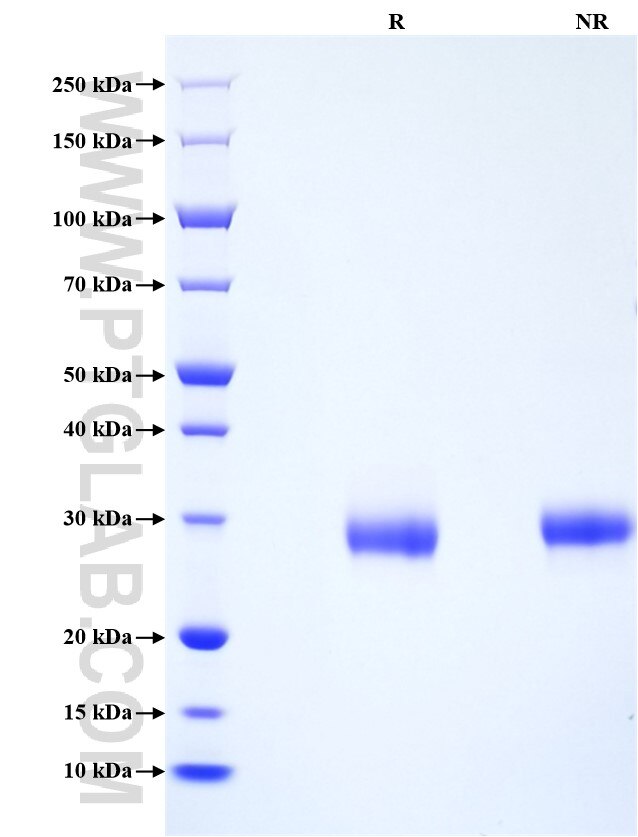Recombinant Human TIMP-1 protein (His Tag)
Species
Human
Purity
>90 %, SDS-PAGE
Tag
His Tag
Activity
not tested
Cat no : Eg0638
Validation Data Gallery
Product Information
| Purity | >90 %, SDS-PAGE |
| Endotoxin | <0.1 EU/μg protein, LAL method |
| Activity |
Not tested |
| Expression | HEK293-derived Human TIMP-1 protein Cys24-Ala207 (Accession# P01033) with a His tag at the C-terminus. |
| GeneID | 7076 |
| Accession | P01033 |
| PredictedSize | 24.5 kDa |
| SDS-PAGE | 28-30 kDa, reducing (R) conditions |
| Formulation | Lyophilized from 0.22 μm filtered solution in PBS, pH 7.4. Normally 5% trehalose and 5% mannitol are added as protectants before lyophilization. |
| Reconstitution | Briefly centrifuge the tube before opening. Reconstitute at 0.1-0.5 mg/mL in sterile water. |
| Storage Conditions |
It is recommended that the protein be aliquoted for optimal storage. Avoid repeated freeze-thaw cycles.
|
| Shipping | The product is shipped at ambient temperature. Upon receipt, store it immediately at the recommended temperature. |
Background
TIMP1 is a member of the family of matrix metalloproteinase inhibitors, which contains four members (TIMP1, TIMP2, TIMP3, and TIMP4). Tissue inhibitors of metalloproteinases (TIMPs) are multifaceted molecules that exhibit properties beyond their classical proteinase inhibitory function. TIMP1 has several MMP-independent functions such as modulation of angiogenesis, promotion of cell proliferation, and inhibition of apoptosis. TIMP1 plays important role in cell cycle regulation and cancer progression. Recently, clinical studies have shown that the aberrant expression of TIMP1 is associated with an unfavorable prognosis in a series of tumors, such as gastric cancer, papillary thyroid carcinoma, cutaneous melanoma and breast cancer. In pregnancy, TIMP1 plays a regulatory role in the process of implantation, particularly the cytotrophoblast invasion of the uterine endometrium.
References:
1. Stetler-Stevenson WG. et al.(2008) Sci Signal.1(27):re6. 2. Batra J. et al.(2012) 287(19):15935-46. 3. Kim YS. et al. (2012) BMB Rep. 45(11):623-8. 4. Graham CH. et al. (1991) J Cell Physiol. 148(2):228-34. 5. Song G. et al. (2016) J Exp Clin Cancer Res. 35(1):148.

